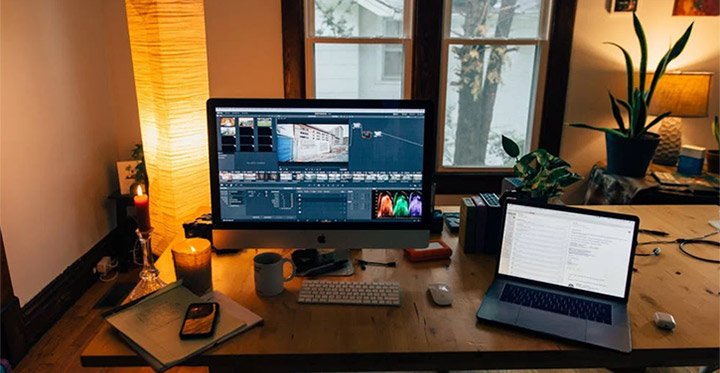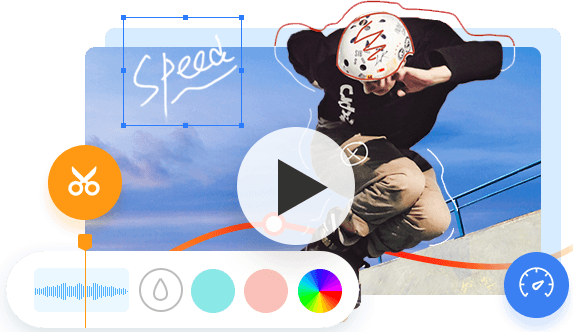Video editing can be time-consuming if your workflow is not streamlined, or you start everything in a rush. Here are 5 tried-and-true video editing tips that prepare you in advance, help you avoid pitfalls, and thus lead to an effective video making process.

There's no denying that video content remains to be the most engaging piece of content currently on digital and non-digital platforms. Whether it’s on social media, a television set, a streaming platform, a website, or an e-commerce marketplace, video outperforms pictures and text in delivering the message.
But not all videos engage people. There are billions of videos that get very little to no engagement, yielding little results for brands, personalities, and businesses. What makes a great video that gets a lot of views, builds up engagement, clearly communicates a message, and gets people to take the desired call to action? There’s a lot that goes into it, let get started.
5 Tips for Video Editing for Effective Creation
What makes for good quality video editing, and how can entrepreneurs, marketers, content creators, and create good videos? Here are 5 video editing tips that make life easier for people creating videos on a regular basis.
1. Invest in the Right Video Editing Software
Video editing takes a lot of resources. Investing in the best video editing software and equipment is one of the most essential video editing tips.
When selecting a video editing laptop or desktop, look into the graphics capabilities and processing power. At the very least, a computer will need 8 GB or RAM to run video editing software. You can also buy an external hard drive or pay for cloud storage like Google Drive as well.
Here are the most popular video editing software options you can use:
- VideoProc Vlogger (Forever Free) — Intuitive editing tool for vloggers and content creators, with speed curves to alter velocity smoothly, motion editor for visual keyframing, audio analyzer to edit to the beat, and hundreds of effects, filters, LUTs, etc.
- Adobe Premiere — Part of the Adobe Creative Suite. Has a lot of editing capabilities and plugins that help with all aspects of video editing. People also offer pre-made transitions and effects for Adobe Premiere. If you want to create animations on video, you might also want to consider getting Adobe After Effects
- Final Cut — Primarily for Mac computers.
- Filmora — Cheaper option for people who need basic editing software to create videos. This program works best for beginner video editors.
- Movie Maker — Free software on Microsoft that provides bare video editing.
- iMovie — The Mac version of Movie Maker.
2. Create a Storyboard
Another great video editing tip is to create a storyboard before and during the shooting, then use it as a reference in video editing.
Video content follows a linear structure and has a start and end. What matters most is what happens in between. Often, many videos have a beginning and end, but no form or structure to the middle part at all. All videos must have some form of a storyboard that dictates the flow of a video so that we don’t simply splice videos together to make a collage of footage.

Videos need a story to engage people and video editing should follow that storyline. Ensure that you have smooth cuts and that scenes and parts of the video weave seamlessly so that viewers don’t lose track and consequently interest in your video.
3. Use Stock Images and Footage
Here is a video editing tip that can relieve your work: use supporting footage and visuals to add variety and support to your storyline. Sometimes shooting or creating these visuals from scratch can be highly time-consuming. So you can use footage, photos, and illustrations from other sites instead. Here are some good sites to check for stock visuals.
- Pexels
- Freepik
- Storyblocks
- Adobe Stock
4. Keep the Platforms in Mind
Not all videos should come in similar formats and dimensions. You’ll also need to know what video format to use. Most of the time, this factor depends highly on the platform that it will go on. Some platforms support specific formats only and come in varying dimensions. Videos on TikTok work best in portrait mode. On Facebook, square videos tend to work best too.
Another platform to create videos for is YouTube as 88% of marketers intend to use YouTube for their video content strategy. Try to understand the best codecs and bitrates that work on the platforms too. Use creative video editing techniques that will work to each platform’s strength.
5. Use Task Automations
Using task automations are one of the most neglected but effective video editing tips.
There are many video editing techniques in producing quality video, but many of them can now be automated to keep editors efficient through the process. Looking for AI tools and video editors with rich presets can help save time.
Some common automations include being able to splice videos with one click or color all videos consistently with very little manual work. Some artificial intelligence tools can also stabilize shaky videos, automatically resize videos for various platforms. There are also video editing tools to turn text into video with AI algorithms, such as Lumen 5.
Artificial intelligence and automations will change the way video editors create content very soon, so it’s important to be adaptive to new tools that could improve your workflow.
Why Great Video Editing Matters
Post-production is a crucial part of the video creation process. Great footage, concepts, and tools mean very little if video editing is of poor quality. A video’s editing can become the make or break element that will determine whether a video will be successful or not. Here are some reasons why investing time, energy, and even resources into good video editing is a good decision.
Bring Awareness to Brands
Good quality videos with effective editing result in more popular brands. Think of any global brand that has made a massive impact. All of those brands have some form of video content. All of that content— or at the very least the far majority of them— have top-tier editing that tells a clear and compelling story in a visually engaging way.
A study of Hubspot shows that 54% of consumers want to see more videos from brands they follow. So it goes to say that branding and videos go hand in hand, especially when creating brand awareness.
Leaves a Lasting Impression
In the same study mentioned above, Hubspot points out that, currently, 62% of video viewers consume the whole content thoroughly. But that number could vary immensely across the board.
Some videos have relatively short watch durations, meaning the videos don’t hold their viewers’ attention long enough for them to watch a good portion of the video. One way to keep viewers engaged is to have good video editing.
Communicate a Message Better
Videos don’t only hold attention longer. They also communicate messages better.
This benefit plays an integral part in other use-case scenarios such as internal videos used to explain company policies, values, culture, and goals. Video has also become an important piece to e-learning as most content in paid courses now comes in video format.
In all these cases and more, great video editing can help present information in a way people can understand better. Great video editing entails properly executing the basics such as syncing audio and video and creating additional visual elements to stress points like text overlays and so on.
Video Editing as a Career
Becoming a video editor can be a rewarding profession if you have the passion and creativity to do it well. According to Zippia's statistics, a video editor normally makes an average of $46,954 in a year in the US.
Some of the best places to work without a degree are also in creative agencies or even medium to large companies as becoming a video editor doesn't necessarily require a college degree.
What matters more is the importance of video editing techniques learned and how you apply them to your videos. So keep up with video editing trends and constantly upskill when you have the chance by attending seminars, watching courses, and looking for creative inspiration.








